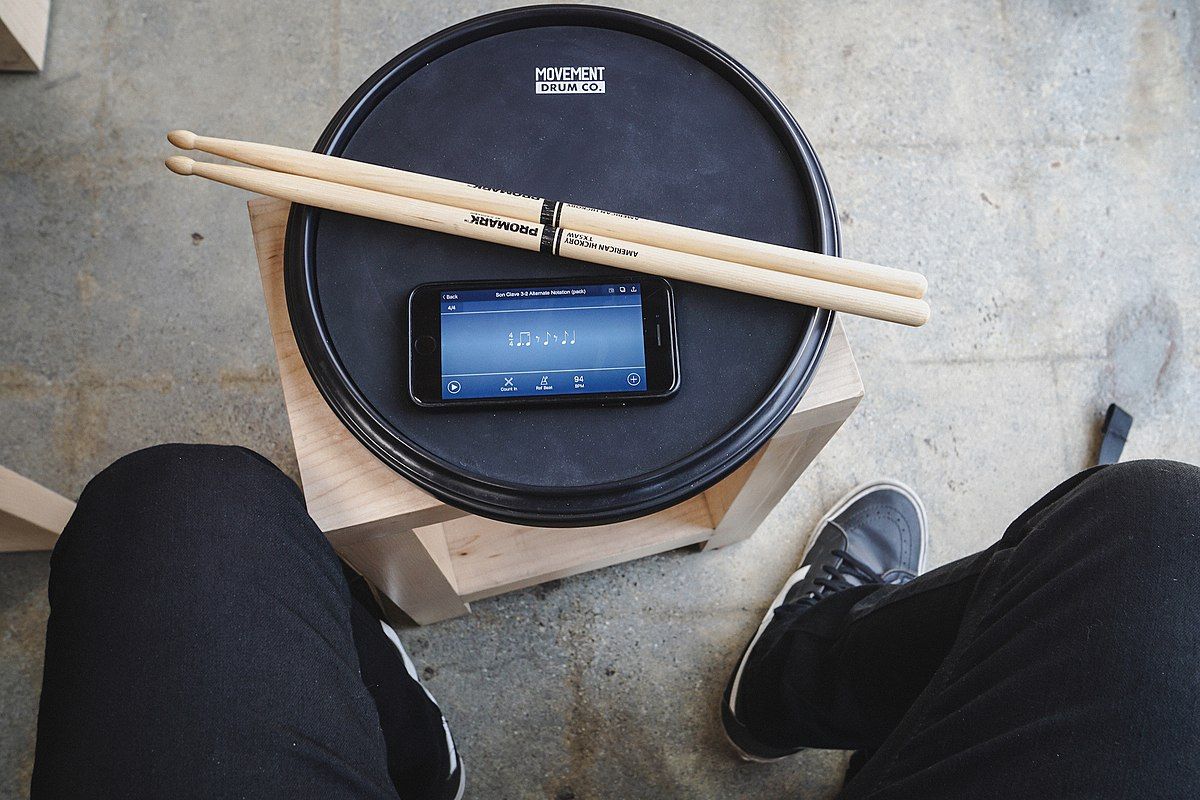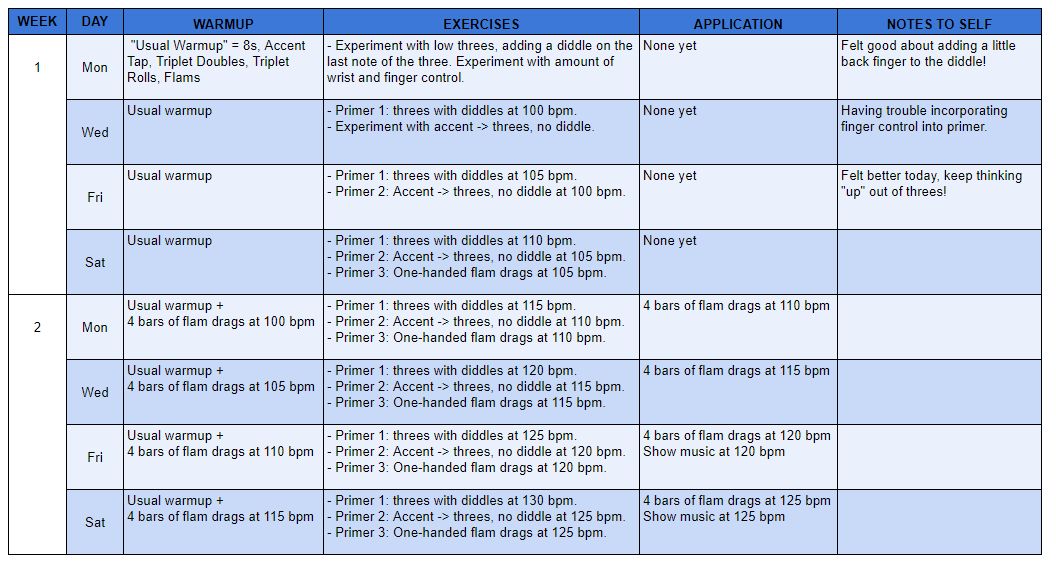Making an Effective Practice Program

Making an Effective Practice Program
Help your students practice and hone their skills on their own
By Aya Strauss, PRM Intern
In today’s virtual world, educators and students are often isolated from each other, limiting opportunities to guide and instruct students. Even during normal seasons, we as educators are limited in our instructional time and the amount of individual attention we can devote to each student.
However, by equipping our students with the tools to create their own structured practice programs, we educators can help our students become more ​self-sufficient​ and​ self-correcting​. Ultimately, this contributes both to the students’ development as musicians and human beings, and to the development of your ensemble.
A well-structured practice program includes setting ​specific goals​, establishing a consistent daily and weekly ​routine​, well-thought out ​exercises​, and ​pacing​ on par with the difficulty of the student’s goals. This article outlines how to incorporate each into the practice routine, with an example practice program and link to practice program at the end.
GOALS
Start by picking a specific goal. This can be to play a certain excerpt, chunk of music, scale, exercise, rudiment, or rhythm. Establish the specific ​tempo​, ​length of phrase, ​and any other parameters you can think of for this goal! This way, you can clearly define when the goal has been achieved and outline specific steps to achieve it.
Non-Specific Goal: “Play my scales better”
Specific Goal: “Play all 12 major scales with no missed notes, in 1 octave, back to back at 100 bpm.”
ROUTINE
Establishing a ​consistent​ structure is essential to develop any skill. Make sure your practice routine is spaced out throughout the week in ​moderate-length​ sessions, rather than concentrating all practice time into one or two longer sessions, for maximum growth and retention. Keep in mind your students’ time and space limitations and help them plan around their challenges!
Sub-optimal routine:​ 2x/week - Monday, Saturday for 3 hours each.
Optimal routine:​ 4x/week, Monday, Wednesday, Friday, Saturday for 1.5 hours each.
PROGRESSION
In order to achieve progress in musicianship skills, a good practice routine incorporates progressive overload - gradually increasing ​tempos​, ​number of reps​, and ​length of phrases​. Start off slowly to break down the skill at the most basic level and train technique, then increase tempos or number of reps in ​small increments​ to gradually build the skill without losing the technique training.
While steady progression can help establish consistency, it’s important to include ​flexibility​ in your program as well. If a student hits a wall at a certain tempo/number of reps/other parameter, encourage them to take it back down tempo for a bit or to stay at that tempo a little longer, and modify the rest of the program to adjust to the slower progression.
Hasty Progression: Week 1: all at 100 bpm. Week 2: all at 140 bpm.
Gradual Progression: Week 1: first two days 100 bpm, next two days 110 bpm. Week 2: first two days 120 bpm, next two days 130 bpm.
EXAMPLE PRACTICE ROUTINE
The following example practice routine shows the first two weeks of a program building up to the goal of playing a flam drag phrase at 140 bpm in a piece of show music. The program is structured day to day and w eek to week. Each day includes a ​warmup​,​ exercise​ portion, and ​“applications”​ section - where the student applies the skills from the exercise to the desired excerpt, etude, or piece of music.
Within the exercise portion of the routine, ​primers ​are gradually added on day to day. Tempos also gradually increase day to day, with the “applications” section increasing in tempos in conjunction.
The routine also includes a column for the student to ​take notes​ for themselves about their practice session, what worked for them and what challenged them.
ENCOURAGE CREATIVITY AND FUN
Establishing a routine can seem intimidating or boring to students at first. While consistency is key to building skills, ​overly rigid​ routines can discourage or demotivate any person. Encourage your students to incorporate other, fun exercises or excerpts into their routine, play with a friend, or watch/listen to their favorite performances to remind them​ why​ they want to build that skill in the first place! An effective practice program is an essential tool, but we educators must always keep in mind that at the end of the day, we are practicing an art form and form of self-expression for our students.+
To stay updated for more articles, show announcements, and news, subscribe NOW!


